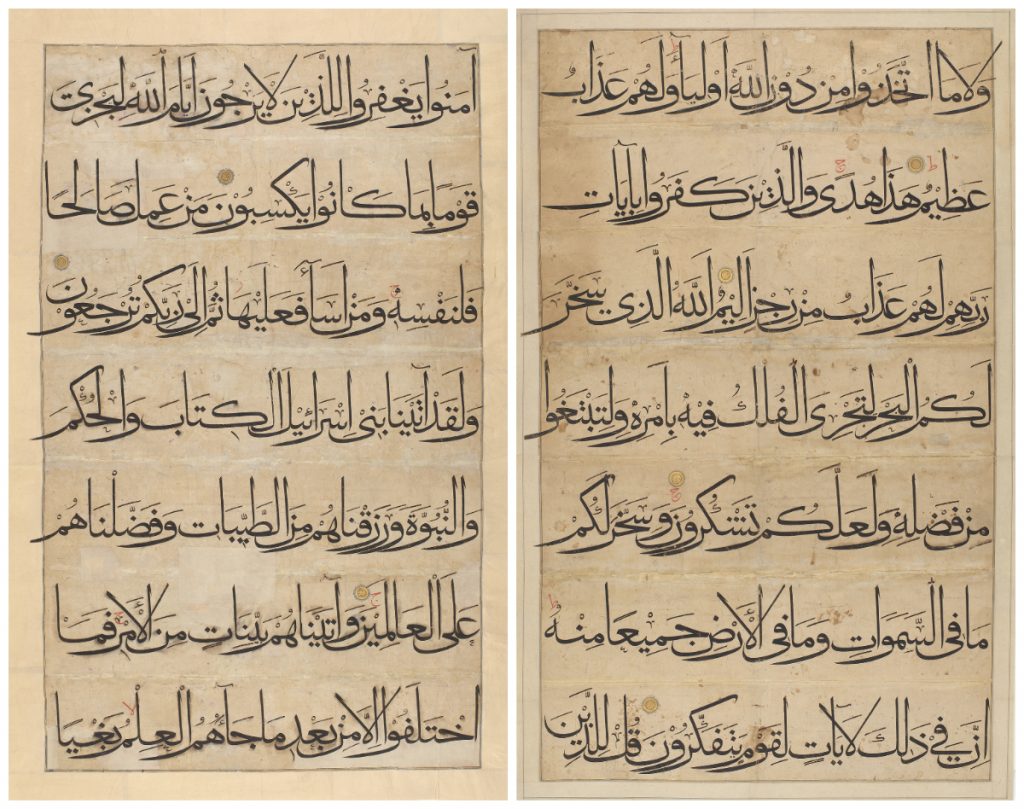
The content of the Qur’an has not changed since the beginning of Islam in the seventh century. By choosing different sizes, formats, materials, calligraphic styles, and illumination, however, artists have created a stunning variety of Qur’anic manuscripts through the ages.
These consecutive folios, written in majestic muhaqqaq script, belong to one of the largest and most impressive Qur’ans ever produced in the Islamic world. They were originally attributed to Baysunghur (died 1433), a Timurid prince and an accomplished calligrapher who governed the vibrant cultural and artistic center of Herat. More recently, they have been associated with his grandfather Timur, who established a vast empire centered on Iran and Central Asia.
Allegedly, the left-handed calligrapher Omar Aqta‘ wanted to impress Timur (Tamerlane, 1336–1405) with his skill. He copied a Qur’an that was so small it fit into a signet ring. When the sovereign was unimpressed, Omar Aqta‘ then transcribed a second Qur’an that was so large it had to be transported to the palace in a wheelbarrow. This time Timur was extremely pleased, and he rewarded the calligrapher accordingly. These folios are believed to be among the few remaining examples of the enormous manuscript that was displayed in Timur’s mosque in Samarqand, the first Timurid capital.


the verses of the Quran is beautiful